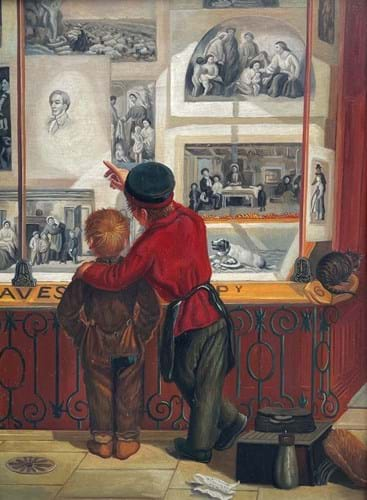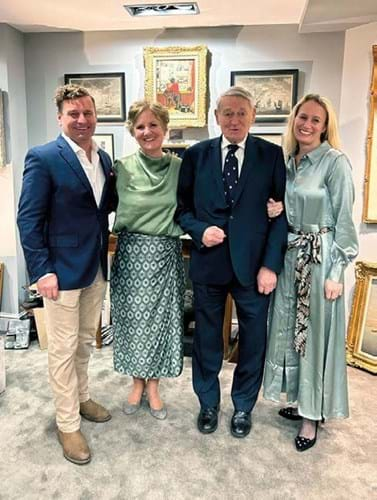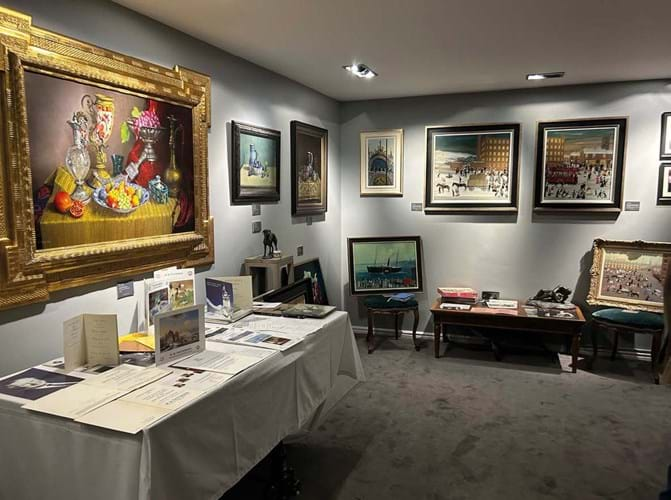
Alexandre Louis Jacob, La Digue au Marais, signed A. Jacob (lower right), oil on canvas, £27,500 at Gladwell & Patterson.
The 2ft 2in x 2ft 8in (65 x 81cm) oil on canvas, La Digue au Marais, is the work of Alexandre Louis Jacob (1876- 1972) and is offered for £27,500.
It is part of the gallery’s exhibition Looking Forward to the Past: An Illustrious 275 Years, which runs until January 31.
The gallery on Beauchamp Place, Knightsbridge, has long championed the French artist and is in the midst of compiling his catalogue raisonné, making the picture an ideal piece to include in the celebratory show.
‘Giants of our history’
For any gallery that has been open for 25 years, let alone 275, the question is: what’s the secret?
Gladwell & Patterson’s Ella Wells says it is getting the right mix of the effective leaders, brilliant artists and faithful clients.
“I think that it’s been the pioneering characters and giants of our history”, she tells ATG.
Though it has an official launch date of 1752, the foundations of the firm can be traced back to 1746 when print merchant John Boydell set up an establishment to sell topographical prints (ranging in price from six pence to one shilling) on the Strand. The rapidly expanding middle class of Victorian Britain had a taste for European prints which Boydell happily imported, and the business grew rapidly.
From its early days, ownership passed through two lord mayors of London as well as the engraver Robert Graves (1798-1873) and Harry Gladwell, who boasted a personal friendship with Vincent van Gogh. The dealership was granted royal warrants by Queen Victoria, Edward VII, George V and Queen Mary (the last of whom is recorded in the catalogue as having bought two works by Auguste Bouvard in a one-man show hosted by the gallery in 1928).

This 1862 picture by William MacDuff depicts two boys looking through the window of the shop when it was Henry Graves & Co. It is part of the company archives today.
Most recently it has been overseen by three generations of the Fuller family, which took over in the 1930s.
They were behind the discovery of two of its leading artists: Jacob as well as Georges Robin, also the subject of one of the gallery’s catalogue raisonné projects.
The current show makes use of the firm’s extensive archives and has been researched, compiled and catalogued by Glenn Fuller, who joined the business in the early 1990s.
Though there are archival pieces on display (including old prints by former owner Robert Graves), most of the work on show is for sale. These days you won’t get far with a shilling, but prices are wide-ranging, starting at £1500 and topping out at more than £1m.
So far, Wells says, “it’s a bit of a trip down memory lane” with many former clients coming through the gallery “showing us the first pictures they ever bought”.
But with any celebration of the past, it also pays to look to the future.
One of the gallery’s plans for 2023 was to stand at Masterpiece.
Its recent cancellation means more focus on shows in-house. And having premises remains key to Gladwell & Patterson’s plans. “Over lockdown we were doing well online and had direct clients supporting it so we toyed with the idea of dispensing with the premises”, Wells says.
But in reality, she adds, it is vital to have a physical space. In fact, the firm recently added to its bricks and mortar holdings with the opening of Gladwells Rutland as a way to reach clients beyond the capital.
The firm can also be found exhibiting at Art Palm Beach (January 25-29), showcasing works by its Modern and Contemporary artists, and The Palm Beach Show (February 16-21).
Valuable contribution
A willingness to adapt could also be crucial to its success. As Fuller writes in the catalogue’s conclusion: “There are hundreds of galleries that have been founded during the time that Gladwells was growing for the first 250 years. Most of them are not here any more.
“The answer I think, is that the company has had good enough people to change in a way that meant it could survive in a vastly changing world while still making a valuable contribution to that world.”
















